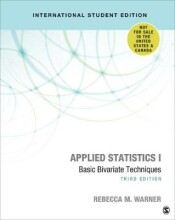The one sample t test
9 important questions on The one sample t test
What can't be said when not rejecting h0?
What discribes the T-value
What is a type 1 decision error?
- Higher grades + faster learning
- Never study anything twice
- 100% sure, 100% understanding
To define the reject region for values of T, we need to know 3 things. What are they?
2. Choice of a, tells how much area is included in one or both tails.
3. Sample df (n-1, tells us which t distribution to use to find critical values that cut off tail areas, for rejection for example
Which 3 questions could examine by the one-sample t test?
2. Is the population hypothesis a plausible value for the mean of the population?
3. Is M significantly different from the mean hypothesis?
Which four assumptions for the use of the one-sample t test can't be violated en why?
- X variables should be independent, otherwise the estimate of SD may be too small.
- Distributions of X scores don't have to be normal, because the scores in the sample are randomly selected, which you can't influence.
- pay attention to outliers, a mode at zero and bimodal distributions with modes far apart. Because if M doesn't make sense to describe, then the one-sample t test won't make sense either.
Why: violations of assumptions can lead to p values that underestimate the true risk of type 1 error
In which cases (test) do you have to divide the p value into 2?
What cant be said about p values?
- a small p value doesn't say that treatment is highly effective
- don't the p value is somewhere in between significant or not.
What is the difference between one-tailed and two taild
two-taild is being used when the 0 or alternative hypothesis is equal
The question on the page originate from the summary of the following study material:
- A unique study and practice tool
- Never study anything twice again
- Get the grades you hope for
- 100% sure, 100% understanding































